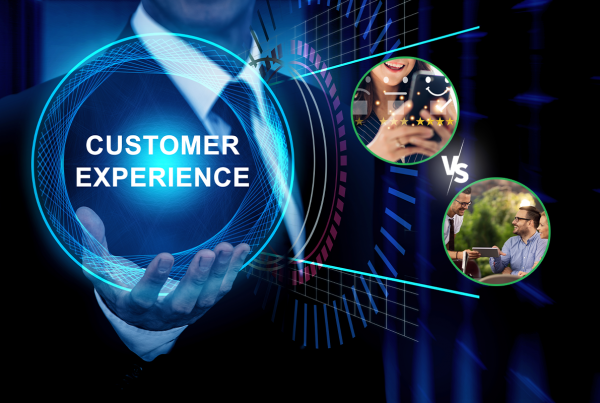In the fast-paced realm of business, the last decade has witnessed a profound evolution in how companies’ approach and deliver customer experience. Technological advancements, shifting consumer expectations, and the rise of digital channels have reshaped the landscape. In this blog post, we’ll delve into the transformative journey of customer experience over the past decade and explore the future trends that are poised to shape the next era.
A Decade of Customer Experience Transformation:
The Rise of Personalization:
Then: A decade ago, personalization was more of a concept than a widespread practice. Companies were exploring ways to tailor experiences based on customer data.
Now: Personalization has become a cornerstone of customer experience. Advanced analytics, AI, and machine learning enable companies to deliver hyper-personalized experiences, from targeted marketing to customized product recommendations.
Mobile Revolution:
Then: Mobile apps were gaining popularity, but their potential for enhancing customer experience was only starting to be realized.
Now: Mobile has become the primary channel for customer interactions. Mobile apps, responsive websites, and seamless cross-device experiences are integral to delivering a consistent and convenient customer journey.
Social Media Integration:
Then: Social media was a burgeoning platform for customer interactions, often handled separately from traditional customer service channels.
Now: Social media is a central hub for customer engagement. Companies actively use social platforms for customer support, feedback, and brand building, recognizing the power of real-time communication and community building.
Shift to Omnichannel Experiences:
Then: Multichannel strategies were in place, but true omnichannel experiences were still evolving.
Now: Customers expect seamless transitions between online and offline channels. Successful companies have integrated channels cohesively, allowing customers to switch between platforms without sacrificing consistency or quality of service.
Data-Driven Decision-Making:
Then: Companies were collecting data, but the full potential of data analytics for decision-making was not fully realized.
Now: Data analytics is a driving force behind customer experience strategies. Companies leverage data to understand customer behavior, predict trends, and make informed decisions to enhance overall customer satisfaction.
Chatbots and AI in Customer Service:
Then: Early iterations of chatbots were limited in their capabilities and often provided frustrating experiences.
Now: AI-powered chatbots are an integral part of customer service. They offer instant responses, personalized interactions, and round-the-clock support, enhancing efficiency and accessibility.
Customer-Centric Culture:
Then: Customer-centricity was a goal for many companies, but it wasn’t universally embedded in organizational cultures.
Now: Customer-centricity has become a cultural imperative. Companies prioritize customer feedback, involve customers in product development, and strive for continuous improvement based on customer insights.
Customer experience (CX) has undergone a significant transformation over the past decade, driven by advances in digital technologies and shifting consumer expectations. Businesses are now recognizing the impact of CX on customer loyalty, brand reputation, and revenue growth. As a result, CX has become a top priority for businesses of all sizes.
The Rise of Customer-Centricity
In the past, businesses were often product-centric, focusing on developing and selling products without considering the customer’s needs and wants. However, in recent years, there has been a shift towards customer-centricity, where businesses prioritize understanding and meeting customer needs. This shift has been driven by several factors, including:
- The rise of online shopping and social media has given customers more power to compare products and services and share their opinions with others.
- Customers are now more demanding and expect personalized and seamless experiences across all channels.
- Businesses are realizing that investing in CX can lead to significant financial benefits.
The Adoption of Digital Channels
The digital revolution has had a profound impact on CX. Customers now interact with businesses through a variety of digital channels, including websites, mobile apps, social media, and chatbots. This has led to several changes, including:
- The need for businesses to provide omnichannel support: Customers expect to be able to interact with businesses in a consistent and seamless way across all channels. Hence the customer experience softwares are also in demand.
- The rise of self-service: Customers increasingly prefer to solve problems themselves, using online resources and chatbots. This arises the need of efficient customer experience software.
- The importance of personalization: Businesses are using data and analytics to personalize customer experiences, such as by making product recommendations and providing relevant content.
The Growing Importance of Data Analytics
Businesses are collecting more data about their customers than ever before. This data can be used to improve CX in a number of ways, such as:
- Identifying customer needs and preferences: Businesses can use data to understand what customers want and need, and use this information to improve their products, services, and experiences.
- Predicting customer behavior: Businesses can use data to predict what customers are likely to do in the future and use this information to personalize their marketing and sales efforts.
- Preventing customer churn: Businesses can use data to identify customers who are at risk of churning and take steps to retain them.
The Rise of Artificial Intelligence and Automation
Artificial intelligence (AI) and automation are playing an increasingly important role in CX. AI-powered chatbots can provide 24/7 customer support, while automated systems can handle tasks such as order processing and customer refunds. This allows businesses to improve efficiency and reduce costs, while also providing customers with a faster and more convenient experience.
How to measure the Customer experience?
Net Promoter Score: Gauging Customer Satisfaction
In the journey of customer experience, the Net Promoter Score (NPS) has emerged as a crucial metric for measuring customer satisfaction. NPS is derived from the simple question: “How likely is it that you would recommend our company/product/service to a friend or colleague?” Respondents are categorized as Promoters, Passives, or Detractors based on their score.
NPS Insights:
Then: Net Promoter Score was gaining recognition as a valuable metric.
Now: NPS is widely adopted, providing companies with actionable insights into customer loyalty and advocacy.
Utilizing Net Promotor Score for Continuous Improvement:
Companies leverage NPS to identify areas for improvement and measure the success of customer experience initiatives.
Future Trends in Customer Experience
The future of CX is likely to be shaped by the following trends:
- The rise of the experience economy: Customers are increasingly willing to pay for experiences, rather than just products or services. Businesses will need to focus on creating memorable and engaging experiences for their customers.
- The importance of personalization: Customers will continue to expect personalized experiences. Businesses will need to use data and analytics to understand individual customer needs and preferences.
- The growing role of AI and automation: AI and automation will continue to play an increasingly important role in CX. Businesses will need to use these technologies to improve efficiency, reduce costs, and provide customers with a faster and more convenient experience.
- Blockchain for Trust and Transparency: Blockchain technology will be utilized to enhance trust and transparency in customer interactions. From secure transactions to transparent supply chains, blockchain will contribute to a more trustworthy customer experience.
Conclusion
The past decade has been a transformative journey for customer experience, marked by technological leaps, changing consumer expectations, and a paradigm shift in how businesses approach customer interactions. Looking ahead, the future of customer experience holds exciting possibilities, driven by emerging technologies and a deepening understanding of the interconnectedness between customer satisfaction, innovation, and business success. As companies continue to adapt and embrace these trends, the next era of customer experience promises to be more dynamic, personalized, and customer-centric than ever before.
Here are some additional thoughts on the future of CX:
- The role of technology will continue to grow: Businesses will need to use new technologies, such as AI, augmented reality, and virtual reality, to create innovative and engaging customer experiences.
- The importance of empathy will increase: Customers will increasingly value businesses that show empathy and understanding.
- The customer journey will become more complex: Customers will interact with businesses across multiple channels, and businesses will need to provide a seamless experience across all of these channels.
Businesses that can keep up with these trends will be well-positioned to succeed in the ever-changing world of CX.








